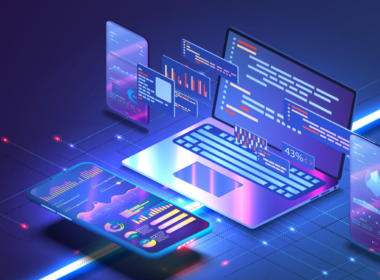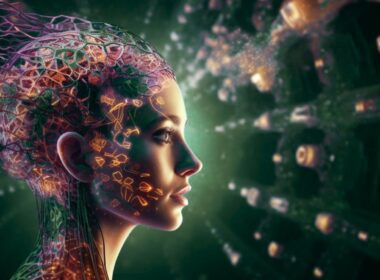Ever feel like your website or app just isn’t quite clicking? You’ve poured your heart and soul into your product, but potential customers just aren’t sticking around.
The culprit might be a disconnect between what you offer and how users experience it. Here’s where UI and UX design come in – the digital design solution for crafting an engaging user journey that keeps your customers coming back for more.
These terms often get thrown around interchangeably, but they address different aspects of the design process. Understanding the distinction between UI and UX design is crucial for building successful products.
Frequently Confused, But Fundamentally Different
To help you understand better, consider your company is launching a new mobile app. UX design is akin to crafting the user journey – from the moment someone downloads the app to the moment they achieve their goal. It considers the onboarding process (clear and easy to follow?), the navigation flow (intuitive and logical?), and even the overall tone and voice (friendly and approachable?).
On the other hand, UI design is like designing the app’s interface itself. It focuses on the visual elements – the button placement, color scheme, and overall layout. Think of it as the user’s window into the app’s functionality.
The World of UX Design: All About the User
UX design stands for User Experience design. It’s the holistic practice of creating a product that caters to the user’s needs and emotions at every touchpoint. Here’s a breakdown of what UX design entails:
- Understanding User Needs: UX designers don’t make assumptions; they conduct research to understand your target audience’s goals, frustrations, and expectations. This user-centric approach ensures your product solves a real problem in a way that resonates with your customers.
- Focus on Usability: A core principle of UX design is creating intuitive and user-friendly experiences. Imagine a website where finding information feels like navigating a maze. A UX designer would streamline the layout, navigation menus, and search functions to ensure a smooth and effortless user journey.
- Continuous Improvement: The best UX designs are never truly finished. Through user testing and data analysis, UX designers constantly refine and iterate on the product, ensuring it continues to meet user needs as technology and user behavior evolve.
- The UX Designer’s Role: From product conception to post-launch support, UX designers play a vital role. They conduct user research, create wireframes and prototypes, and collaborate with developers and UI designers to bring the user experience to life.
Having grasped the essence of UX design and its impact on the user experience, it’s time to shift our focus to UI design. Remember, while UX envelops the overall feel, UI is what brings color and form to your vision. How can a strong UI design further elevate your product? Let’s find out.
Read: A Step-by-Step Guide on How to Conduct a Successful User Experience Workshop
The Art of UI Design: Making it Visually Appealing
UI design stands for User Interface design. It focuses on the visual elements and interactive components that users directly interact with. Think of it as the aesthetic layer on top of the UX foundation. Here’s a closer look at the world of UI design:
Human-Computer Interaction: UI designers ensure a seamless interaction between users and the product. Button placement, responsiveness across devices, and overall layout all fall under the purview of UI design.
The UI Design Process: UI designers utilize various tools and techniques to craft visually appealing interfaces. This includes creating style guides, selecting color palettes and typography, and ensuring the design aligns with your brand identity.
While both UX and UI are crucial for a successful product, they address different stages of the design process. Understanding these differences allows you to effectively communicate your vision and build a high-performing team.
Key Differences Between UI and UX design
You’ve seen how UI design can take your product from drab to fab, but there’s more to the story than just aesthetics! UI design is like the icing on the cake, but UX design is the cake itself. They work together beautifully, but serve distinct purposes.
Check out this table to see how UX and UI play different, but equally important, roles in building a winning product.

The intricacies of UX and UI design can be a little mind-boggling at first. But fret not! Codewave’s UI-UX design services bridge this gap seamlessly. Our team of experts brings together UX’s user-centric approach and UI’s focus on visual appeal to craft harmonious digital experiences that resonate with your target audience.
The Role of a UX Designer
With a clearer understanding of how UX and UI uniquely contribute to the product design process, let’s zoom in on the specific roles these designers play. Starting with UX designers, whose strategies and insights into user behavior can make or break a product’s success.
UX designers are integral to the product development process, guiding products from conception to delivery. Their roles encompass a wide array of responsibilities:
Product Lifecycle Management: UX designers oversee the user experience aspects throughout the product’s lifecycle, from initial concept to final delivery. This involves envisioning the user journey and ensuring the final product aligns with user needs.
Content Strategy: They develop a content strategy that aligns with the user’s expectations and enhances the overall experience. This includes planning the type of content, executing these plans, and continuously analyzing the impact to ensure the content meets the user goals effectively.
Testing and Prototyping: UX designers frequently conduct A/B testing to compare different user experiences and decide which one performs better. Additionally, they create wireframes and prototypes to visualize the layout and functionality of web pages or applications before they are built, ensuring that the best possible design moves forward into development.
Consumer Research: A significant part of their role involves designing research instruments (like surveys and focus groups) and conducting extensive user studies. This research is crucial to understand your user’s behavior, needs, and challenges, which informs the design and functionality of the product.
Codewave’s UX designers are committed to crafting user-centric solutions that drive engagement and satisfaction. Partner with us to see how our comprehensive UX design process can elevate your product.
The Role of a UI Designer
Understanding the multi-faceted role of a UX designer sheds light on the importance of a seamless user experience. Equally vital is the role of a UI designer, who brings the visual and interactive essence of your product to life.
UI designers focus primarily on the look and feel of a product, crafting a visual interface that is both appealing and functional.
Visual Interface Focus: UI designers are tasked with making the product’s interface engaging and visually appealing. They ensure that the application or website is not only good-looking but also organized in a way that is accessible to all users.
Creating and Maintaining Brand Style: They develop and maintain brand style guides, which are crucial for ensuring consistent aesthetics across all company products and services. This includes defining the color schemes, typography, logo usage, and other elements that keep your brand’s visual identity cohesive.
Visual Design: In this role, UI designers make detailed decisions about typography, color, and layout. They choose appropriate fonts, color palettes, and layout structures that enhance the readability and attractiveness of the interface.
Responsive Design: UI designers also ensure that designs are functional and aesthetic on various devices. This involves designing interfaces that adapt to different screen sizes and orientations, providing an optimal user experience whether accessed via smartphone, tablet, or desktop.
Read: Impact of Web Design on Digital Marketing Strategy in the Tech Industry
Skills Required for UX/UI Designers
To ensure your company stays ahead of the curve, it’s important to invest in UX/UI designers who possess a well-rounded skill set.
This goes beyond just artistic talent. Look for individuals who combine technical expertise with strong communication and problem-solving abilities. The ideal team will not only create beautiful interfaces but also conduct user research, craft intuitive user journeys, and stay up-to-date on the latest design trends.
Hard Skills
- UX Research: This is foundational to UX design. UX research involves gathering insights about users through methods such as surveys, interviews, and usability tests. This data drives all design decisions, ensuring that user needs are at the center of the product development process.
- Wireframing: Wireframes are simplified visual representations of a product’s layout, crucial for planning the structure of web pages or apps. They are typically devoid of style, color, or graphics, focusing purely on functionality and user flow.
- Prototyping: Unlike wireframes, prototypes are interactive and simulate the user interface design. Prototyping is an iterative process where UX/UI designers test and refine the interaction between the user and the interface to ensure it is both intuitive and engaging.
- Visual Communication: This involves the ability to communicate design ideas and user flows through visual representations. It’s essential for conveying abstract concepts to team members and stakeholders in a clear and visually engaging manner.
Soft Skills
- Empathy: Perhaps the most crucial soft skill for UX/UI designers, empathy involves understanding and sharing the feelings of others. In design, this means putting oneself in the user’s shoes to create a more user-centric product.
- Organization: Given the complexity and iterative nature of design projects, being highly organized is indispensable. This skill ensures that designers manage their tasks efficiently, adhere to deadlines, and keep track of multiple iterations of a design.
- Curiosity: The tech field is constantly changing, and a curious mind thrives here. Curiosity drives designers to continuously seek new trends, tools, and methodologies to improve their designs and workflow.
Tools
- Figma: A popular tool for UX/UI design, Figma allows for collaboration in real-time, making it ideal for teams working remotely. It combines wireframing, prototyping, and gathering feedback, all in one platform.
- Adobe XD: Known for its smooth interface and integration with other Adobe Creative Cloud apps, Adobe XD is used for wireframing, prototyping, and creating animations.
- Sketch: Primarily used for UI design, Sketch is a vector-based tool favored for its simplicity and effectiveness in creating interfaces and icons.
- InVision: This tool is used for prototyping and collaboration. It allows designers to upload their static designs and add animations to simulate interactions, making it easier to convey how the final product will function.
Understanding of Code
While not mandatory, having a basic understanding of coding languages such as HTML, CSS, and JavaScript can be highly beneficial for UX/UI designers. It enables designers to understand the constraints and possibilities within the development phase, facilitating better communication with developers and ensuring designs are realistic and implementable.
Equipped with these skills, UX/UI designers are better prepared to tackle the challenges of designing user-centric digital products that are not only functional but also visually compelling. This blend of skills helps bridge the gap between user needs and the final product, ensuring a successful design outcome.
Read: A 2024 Guide for Mobile App Design For Designers
Importance of Knowing Both UX and UI
In today’s competitive market, a user-friendly and visually appealing product is no longer a luxury, it’s a necessity. Here’s why having a team/ individual with expertise in both UI and UX design is a strategic advantage for your SME
- A Seamless User Journey: Imagine a website with a beautiful design but a confusing layout. This disconnect can frustrate users and lead to them abandoning your product altogether. A team with both UX and UI skills ensures a cohesive experience where the user interface complements the user journey, leading to higher engagement and customer satisfaction.
- Standing Out From the Crowd: In a crowded marketplace, a well-designed product can grab attention and convert potential customers. A combined UX/UI team can create an interface that’s not only beautiful but also intuitive and user-friendly. This winning combination can give your SME a significant edge over competitors.
- Increased Efficiency and Cost Savings: Having separate UX and UI teams can lead to inefficiencies and communication gaps. A combined team streamlines the design process, avoids rework, and ultimately saves your company time and resources.
- A Future-Proof Investment: Technology and user behavior are constantly evolving. A team with both UX and UI expertise can adapt your product to these changes, ensuring it remains user-friendly and relevant in the long run.
Why Partnering with Codewave for UI/UX Design is a Smart Move for SMEs
In today’s digital age, user experience (UX) and user interface (UI) design are no longer afterthoughts – they’re fundamental to the success of any product. By crafting an intuitive and visually appealing experience, you can keep your customers engaged, boost brand loyalty, and ultimately drive sales.
For SME founders, building a dedicated UX/UI design team might not always be feasible. That’s where partnering with a design agency like Codewave can be a game-changer.
Our team of UX and UI experts brings a wealth of experience to the table. We collaborate closely with you to understand your target audience and develop a product that not only looks great but also delivers an exceptional user experience.
Ready to take your SME to the next level? Contact us today for a free consultation and discover how user-centric design can revolutionize your product and propel your business forward.
Frequently Asked Questions
1. What’s the difference between UI and UX design ? Do I need both?
While UI and UX design are often used interchangeably, they address different aspects of the design process. UX design focuses on the user’s experience from start to finish, ensuring your product is easy and enjoyable to use. UI design is all about the visual elements and layout – the look and feel of your website or app.
Ideally, you’ll want a team with expertise in both UX and UI to create a product that’s not only user-friendly but also visually appealing.
2. I have a small team. Can one person handle both UI and UX design ?
For many SMEs, hiring a dedicated UX/UI designer might not be feasible. The good news is that many designers have a strong foundation in both UX and UI principles. When interviewing potential candidates, ask about their experience in both areas and their portfolio to see their approach to design.
3. What qualifications should I look for when hiring a UX/UI designer?
While a strong design portfolio is essential, look for candidates who can demonstrate their understanding of user needs and business goals. Here are some key qualities:
- Empathy: Can they put themselves in the shoes of your customers?
- Communication skills: Can they clearly explain design concepts to both technical and non-technical audiences?
- Problem-solving skills: Can they identify user pain points and develop creative solutions?
- Ability to work collaboratively: A good UX/UI designer can work effectively with developers and other stakeholders.
Codewave is a design thinking led digital transformation company enabling organisations with playful innovation using AI & ML, IoT & Edge, AR, VR, Cloud, Blockchain, and Data.







